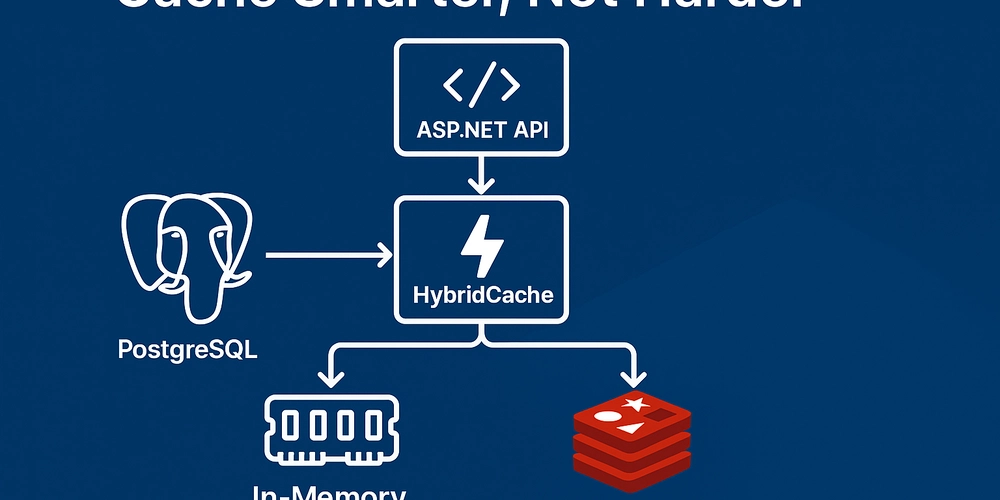Introduction to Data Engineering Concepts |8| Data Lakes Explained
Free Resources Free Apache Iceberg Course Free Copy of “Apache Iceberg: The Definitive Guide” Free Copy of “Apache Polaris: The Definitive Guide” 2025 Apache Iceberg Architecture Guide How to Join the Iceberg Community Iceberg Lakehouse Engineering Video Playlist Ultimate Apache Iceberg Resource Guide As data volumes grow and the types of data organizations work with become more varied, traditional data warehouses start to show their limits. Structured data fits neatly into tables, but what about videos, logs, images, or JSON documents with unpredictable formats? This is where the concept of a data lake comes into play. In this post, we’ll explore what a data lake is, how it compares to a data warehouse, and why it’s become a cornerstone of modern data architecture. What is a Data Lake? A data lake is a centralized repository designed to store data in its raw form. Whether the data is structured like CSV files, semi-structured like JSON, or unstructured like text or images, the lake accepts it all. It acts as a catch-all layer for every piece of data an organization might want to use for analysis, training models, or historical archiving. Unlike a data warehouse, which expects a predefined schema and consistent structure, a data lake embraces flexibility. The idea is to collect the data first and figure out how to use it later—a principle often referred to as schema-on-read. This approach enables data engineers and scientists to access and experiment with data that hasn’t yet been modeled or cleaned. It fosters innovation by removing upfront constraints about how data should look. Key Characteristics At its core, a data lake is built on inexpensive, scalable storage—typically object storage like Amazon S3, Azure Data Lake Storage, or Google Cloud Storage. These systems offer the capacity to store petabytes of data without the overhead of traditional database systems. Because lakes deal with raw data, they don’t enforce strict schemas when data is written. Instead, structure is applied at query time. This allows different teams to interpret the same data in different ways, depending on the analysis they want to perform. This flexibility is powerful, but it comes with a cost: governance becomes more challenging. Without strong metadata management and data cataloging, lakes can quickly turn into what’s often called a “data swamp”—a cluttered repository that’s hard to navigate or trust. Data Lakes vs Data Warehouses The primary difference between data lakes and data warehouses lies in structure and purpose. Data warehouses are optimized for structured data, curated models, and consistent performance. They serve business users who need reliable access to cleaned, aggregated data for dashboards and reports. Data lakes are optimized for scale and flexibility. They support raw data, including logs, sensor output, and third-party feeds, making them ideal for machine learning and advanced analytics. While a warehouse is all about predefined questions and structured answers, a lake is about exploration and experimentation. In practice, many organizations use both. The lake acts as the foundation, storing everything, while the warehouse sits on top as a refined layer for operational analytics. This layered architecture sets the stage for more advanced approaches, such as the data lakehouse, which we'll explore later in this series. Building and Managing a Data Lake Creating a data lake involves more than dumping files into storage. A well-functioning lake includes clear organization, access controls, and metadata layers that describe what each dataset is, where it came from, and how it’s used. Data is often organized into zones. A raw zone stores unprocessed source data. A staging or clean zone contains transformed and validated datasets. A curated zone includes data that’s ready for consumption by analysts or applications. Maintaining this structure helps manage lifecycle policies, access permissions, and lineage. Cataloging tools like AWS Glue, Apache Hive Metastore, or more modern solutions like Amundsen or DataHub help track what’s in the lake and make it discoverable. Processing engines like Apache Spark, Presto, or Dremio allow users to query data directly in the lake, using SQL or custom logic. These tools interpret files stored in formats like Parquet, ORC, or Avro, applying structure dynamically based on metadata or inferred schema. When to Use a Data Lake A data lake makes the most sense when you’re dealing with large volumes of diverse data types or when you're unsure how the data will be used. It’s particularly valuable in environments focused on research, machine learning, or combining traditional business data with less conventional sources like social media or IoT signals. However, if you need consistent, curated data for business reporting, a warehouse may be the better choice. Data lakes and warehouses s

Free Resources
- Free Apache Iceberg Course
- Free Copy of “Apache Iceberg: The Definitive Guide”
- Free Copy of “Apache Polaris: The Definitive Guide”
- 2025 Apache Iceberg Architecture Guide
- How to Join the Iceberg Community
- Iceberg Lakehouse Engineering Video Playlist
- Ultimate Apache Iceberg Resource Guide
As data volumes grow and the types of data organizations work with become more varied, traditional data warehouses start to show their limits. Structured data fits neatly into tables, but what about videos, logs, images, or JSON documents with unpredictable formats? This is where the concept of a data lake comes into play.
In this post, we’ll explore what a data lake is, how it compares to a data warehouse, and why it’s become a cornerstone of modern data architecture.
What is a Data Lake?
A data lake is a centralized repository designed to store data in its raw form. Whether the data is structured like CSV files, semi-structured like JSON, or unstructured like text or images, the lake accepts it all. It acts as a catch-all layer for every piece of data an organization might want to use for analysis, training models, or historical archiving.
Unlike a data warehouse, which expects a predefined schema and consistent structure, a data lake embraces flexibility. The idea is to collect the data first and figure out how to use it later—a principle often referred to as schema-on-read.
This approach enables data engineers and scientists to access and experiment with data that hasn’t yet been modeled or cleaned. It fosters innovation by removing upfront constraints about how data should look.
Key Characteristics
At its core, a data lake is built on inexpensive, scalable storage—typically object storage like Amazon S3, Azure Data Lake Storage, or Google Cloud Storage. These systems offer the capacity to store petabytes of data without the overhead of traditional database systems.
Because lakes deal with raw data, they don’t enforce strict schemas when data is written. Instead, structure is applied at query time. This allows different teams to interpret the same data in different ways, depending on the analysis they want to perform.
This flexibility is powerful, but it comes with a cost: governance becomes more challenging. Without strong metadata management and data cataloging, lakes can quickly turn into what’s often called a “data swamp”—a cluttered repository that’s hard to navigate or trust.
Data Lakes vs Data Warehouses
The primary difference between data lakes and data warehouses lies in structure and purpose.
Data warehouses are optimized for structured data, curated models, and consistent performance. They serve business users who need reliable access to cleaned, aggregated data for dashboards and reports.
Data lakes are optimized for scale and flexibility. They support raw data, including logs, sensor output, and third-party feeds, making them ideal for machine learning and advanced analytics. While a warehouse is all about predefined questions and structured answers, a lake is about exploration and experimentation.
In practice, many organizations use both. The lake acts as the foundation, storing everything, while the warehouse sits on top as a refined layer for operational analytics. This layered architecture sets the stage for more advanced approaches, such as the data lakehouse, which we'll explore later in this series.
Building and Managing a Data Lake
Creating a data lake involves more than dumping files into storage. A well-functioning lake includes clear organization, access controls, and metadata layers that describe what each dataset is, where it came from, and how it’s used.
Data is often organized into zones. A raw zone stores unprocessed source data. A staging or clean zone contains transformed and validated datasets. A curated zone includes data that’s ready for consumption by analysts or applications.
Maintaining this structure helps manage lifecycle policies, access permissions, and lineage. Cataloging tools like AWS Glue, Apache Hive Metastore, or more modern solutions like Amundsen or DataHub help track what’s in the lake and make it discoverable.
Processing engines like Apache Spark, Presto, or Dremio allow users to query data directly in the lake, using SQL or custom logic. These tools interpret files stored in formats like Parquet, ORC, or Avro, applying structure dynamically based on metadata or inferred schema.
When to Use a Data Lake
A data lake makes the most sense when you’re dealing with large volumes of diverse data types or when you're unsure how the data will be used. It’s particularly valuable in environments focused on research, machine learning, or combining traditional business data with less conventional sources like social media or IoT signals.
However, if you need consistent, curated data for business reporting, a warehouse may be the better choice. Data lakes and warehouses serve different needs, and understanding how they complement each other is key to building a balanced architecture.
In the next post, we’ll look at storage formats and compression—essential building blocks for making data lakes and warehouses efficient, scalable, and cost-effective.





































































































































































![[The AI Show Episode 145]: OpenAI Releases o3 and o4-mini, AI Is Causing “Quiet Layoffs,” Executive Order on Youth AI Education & GPT-4o’s Controversial Update](https://www.marketingaiinstitute.com/hubfs/ep%20145%20cover.png)





























































































































![[FREE EBOOKS] Learn Computer Forensics — 2nd edition, AI and Business Rule Engines for Excel Power Users & Four More Best Selling Titles](https://www.javacodegeeks.com/wp-content/uploads/2012/12/jcg-logo.jpg)





![From Art School Drop-out to Microsoft Engineer with Shashi Lo [Podcast #170]](https://cdn.hashnode.com/res/hashnode/image/upload/v1746203291209/439bf16b-c820-4fe8-b69e-94d80533b2df.png?#)






































































































(1).jpg?#)
































_Inge_Johnsson-Alamy.jpg?width=1280&auto=webp&quality=80&disable=upscale#)











































































































![Apple to Split iPhone Launches Across Fall and Spring in Major Shakeup [Report]](https://www.iclarified.com/images/news/97211/97211/97211-640.jpg)
![Apple to Move Camera to Top Left, Hide Face ID Under Display in iPhone 18 Pro Redesign [Report]](https://www.iclarified.com/images/news/97212/97212/97212-640.jpg)
![Apple Developing Battery Case for iPhone 17 Air Amid Battery Life Concerns [Report]](https://www.iclarified.com/images/news/97208/97208/97208-640.jpg)
![AirPods 4 On Sale for $99 [Lowest Price Ever]](https://www.iclarified.com/images/news/97206/97206/97206-640.jpg)































![[Updated] Samsung’s 65-inch 4K Smart TV Just Crashed to $299 — That’s Cheaper Than an iPad](https://www.androidheadlines.com/wp-content/uploads/2025/05/samsung-du7200.jpg)



































































